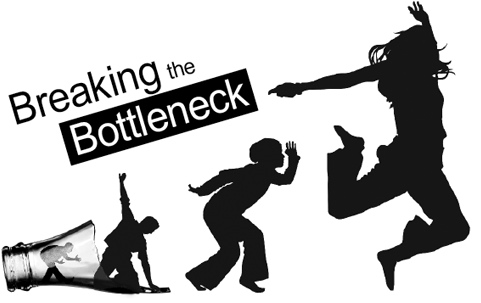Community life competence
Connecting local responses around the world
Connect with us
Website: the-constellation.org
Newsletter English, French Spanish
Facebook https://www.facebook.com/pages/The-Constellation/457271687691239
Twitter @TheConstellati1
Instagram: https://www.instagram.com/constellationclcp/
Bottlenecks and Dripfeeds: How much has changed?
At the upcoming XIX International AIDS Conference here in Washington D.C., I'll be joining REPSSI (the Regional Psychosocial Support Initiative) as they celebrate their decade-long work to lessen the devastating social and emotional (psychosocial) impact of poverty, conflict, HIV and AIDS among children and youth across East and Southern Africa.
In preparation, I am re-reading this 2005 Save the Children UK publication, "Bottlenecks & drip-feeds: Channelling resources to communities ...."
In it the author Dr. Geoff Foster argues that what stops the smooth flow of aid funds to support indigenous, community-level initiatives is:
1) Providing resources to communities is not taken seriously at global and national levels,
2) Current risk-averse funding mechanisms do not allow for resource ‘flows’ that reach community-based organizations, and
3) Donors and governments are not held accountable for spending to support community initiatives.
It leaves me wondering, in the seven years since this was written, how much has changed?
As community-based and -focused institutions, grassroots organizations are still part of the social fabric of the community in which girls and boys live and grow. They are still uniquely positioned to serve and be led by vulnerable, unreached, and marginalized children. Grassroots organizations are still most often the “first responders,” addressing children's and families' immediate and long-term needs. When election-related violence breaks out, an earthquake hits, or a case of abuse is discovered, grassroots organizations still snap into action to make sure kids are safe and cared for, demonstrating a resourcefulness and commitment to children that stems from their “staying power” at the local level.
This intimate position within girls’ and boys' lives and in the community enables grassroots organizations to (1) have the legitimacy and trust to reach marginalized and isolated children with supportive and appropriate care, (2) design programs that are deemed most necessary and sensible in their locality, and (3) use their expertise to influence local support systems and institutions (e.g. families, schools, etc.) to more adequately fulfill children’s rights.
This is why seven years later I still want to see more well-resourced mechanisms that reach under-funded grassroots organizations with unrestricted small grants. When it comes to children, these grassroots leaders are the real experts.
Among us 25,000+ "experts" who will be gathered in D.C. later this month, is our lack of humility what really stops the smooth flow of funds?
Organizations like REPSSI know how to break the bottleneck when it comes to funding for children--but are we listening?
***
This post originally appeared at: http://www.how-matters.org/2012/07/05/bottlenecks-and-dripfeeds/
***
Related Posts
The Case of the Missing Tomato Cages
“With the available resources we had…”
What’s missing from the aid effectiveness debate? Overlooking the c...
Reaching Girls at the Grassroots – A Sound Investment (Part 2)
Trocaire: 10 things INGOs need to do
The wisdom of dlalanathi: Reflections on organizational growth
© 2025 Created by Rituu B. Nanda.
Powered by
![]()

You need to be a member of Community life competence to add comments!
Join Community life competence